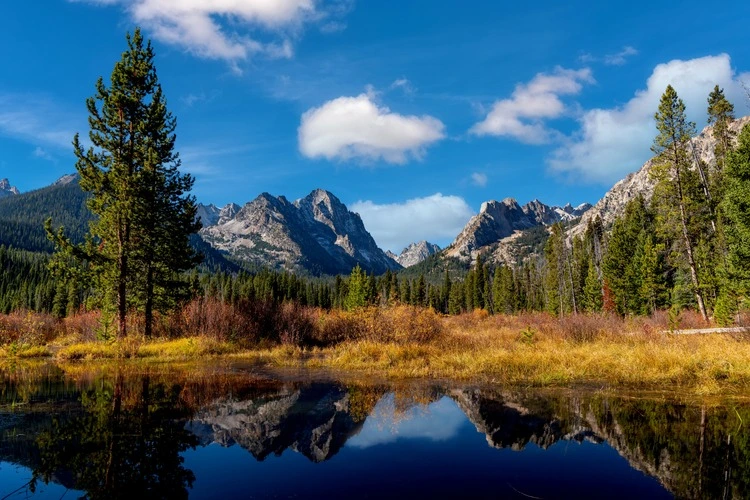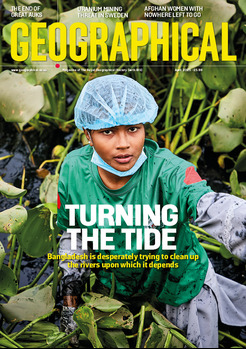
Discover which states voted the most red and blue across America – and why their allegiance to either Republicans or Democrats is so strong
By
With the 2024 US Election results concluding in Donald Trump’s return to the White House, certain states’ allegiances to parties have been revealed in the breakdown of the latest electoral map.
Many factors combine together before a vote drops into a ballot box – economic, cultural as well as generational – to form a decision for either the Republicans or the Democrats. But who were the strongest backers of either party this year, and why?
Here we cover the top five red and blue states – according to percentage of votes – analysing exactly what makes these states so steadfast in their voting for either Harris or Trump.
Republican
5) Alabama – 64.8 per cent Trump

For twelve consecutive presidencies, Alabama has voted firmly red. According to the president of the Alabama Policy Institute Caleb Crosby, most of the state’s legislators are in agreement that the state is conservative and should be governed likewise. These conservative outlooks include governments intervening on moral issues, opposing social programs and favouring low taxes.
Enjoying this article? Check out our related reads:
The state’s high percentage of Christian voters – with 86 per cent of Alabama’s population identifying as such – often prioritise issues which the Republican party address in campaigns and policies too.
4) Oklahoma – 66.2 per cent Trump

Republicans often win votes in rural states, whereas Democrats tend to scoop major US urban areas. Oklahoma – with farming a viable and common occupation undertaken there – is no exception to the rule, a rural state giving 66.2 per cent of its votes to the Republican Party.
An estimated 50 per cent of Oklahoma’s population self-identifies as an evangelical Protestant, and with this religious group experiencing one of the biggest voting shifts out of any towards Republicans, it is clear to see how this has helped Oklahoma in voting for Trump this year.
3) Idaho – 67.3 per cent Trump

Idaho is one of the US’s most Republican-supporting states, sometimes referred to as a two-party state – Republican, and more Republican. When state legislature is being voted upon, most elections do not feature even a Democratic candidate.
One reason that reinforced Idaho’s Republican voting demographic to red happened back in the 1990s. Movement of citizens from states including California increased the state’s population by 28.5 per cent between 1990 and 2000. While initially concerned that these new citizens would bring about Democrat values, in-migration of even more Republicans began to occur.
Cultural rather than economic reasons were propelling those from other states into an area more accepting of Republican ideologies, solidifying the state firmly in the red for years to come.
2) North Dakota – 67.5 per cent Trump

At second is North Dakota, totalling 67.5 per cent of its votes to Trump. In 2020, Trump also won North Dakota by a margin of 33 percentage points, the third-highest margin out of any US state.
North Dakota’s status as a major energy-producing and agricultural state is something voters believe the Republican party will be able to advocate for in future policies and legislations, according to analysts.
First harvested in 1951, oil is a vast industry in the state and Republican parties have been keen to reassure voters that the boom of the oil industry in the state will continue. Fracking in North Dakota in the early 2000s created thousands more oil wells, translating to more than a million barrels a day and placing the state in second place after Texas for the US’s biggest oil producer.
Trump has previously called for a significant wave of oil and gas drilling for what he terms ‘liquid gold’, whereas Harris expressed support for a nationwide ban on fracking in a previous campaign but has since taken a softer stance – but one that still ultimately seeks to move away from an over-reliance on oil and gas.
With clearly conflicting agendas on oil between Trump and Harris, it is clear why North Dakota citizens favoured for the party with an interest in pursuing one of its main economic interests.
1) West Virginia – 70.2 per cent Trump

West Virginia takes top spot as the state with the greatest percentage of votes for Trump in this year’s presidential election. While voting predominately for the Democrats from the 1920s up until 1996, West Virginia since flipped to become solidly Republican.
In 2016, Trump defeated Clinton by 42 per cent, and Biden by 39 per cent in 2020 in the state, making it home to the current president’s second largest margin following Wyoming.
One of the biggest reasons causing West Virginia’s shift to the red side came as industries like coal faced severe decline, for which the state is a key supplier. Republicans have helped to sooth economic worries by promising continued support for traditional energy jobs and putting miners back to work.
The Republican party also launched a rhetoric dubbed the ‘war on coal’ to describe the Democrat’s attempts for stronger environmental policies.
For a state whose economy has long relied on the coal industry, it is plausible to see why voters are shifting to the Republican party’s promises of job security in West Virginia.
Democrat
5) California – 57.3 per cent Harris

California’s allegiance to the Democrat party can be traced back to the backlash following Prop 187 in the 1990s by the then Republican party, a ballot measure which sought to prevent undocumented immigrants in the US accessing public services such as healthcare and schooling.
The bill was passed – 59 per cent to 41 per cent – but after judge rulings, never fully went into effect. Despite this, the long-standing damage to immigrant families had taken effect.
Following the attempted measure, many Latino immigrants began to vote to the Democratic Party, a trend in the state which has never since ceased. Today, 40 per cent of California’s population are Latino, making up a large proportion of the voting population.
Other shifts that contributed to California’s blue-leaning stance include patterns of out-migration in which traditionally Republican-voting demographics left the state, and mostly educated university graduates came in.
As well as this, the two industries for which modern-day California is known for – technology and entertainment – are concentrated around bustling metropolises including San Francisco and Los Angeles, urban hotspots that traditionally tend to be culturally liberal.
California also has one of the highest poverty rates in the US. Economic reasons often encourage those experiencing homelessness to vote blue.
4) Hawaii – 60.6 per cent Harris

With the greatest percentage of multiracial residents of any US state – and the highest population of Asian Americans – Hawaii is one of the most culturally and ethnically diverse places in the US.
Since its recognition as a US state 65 years ago, only two Republican governors have been elected.
The rise of labour unions in the 1930s and 40s – demanding for better working conditions and wages – began to shift Hawaii’s previous red allegiance to that more closely aligned with the Democrats, and is one of the reasons for the state voting blue today.
The lingering impact of such labour unions can be felt in Hawaii even today. As of 2023, it had the highest percentage of union workers in the US – 24.1 per cent of its working population.
3) Massachusetts – 61.3 per cent Harris

High levels of diversity and education within Massachusetts are reasons that the state has leaned more in favour of Harris in this year’s presidential race. More than 45 per cent of voters hold a Bachelor’s degree or higher in Massachusetts, a factor that makes it more likely for an individual to vote for Democrat candidate according to Pew Research Center.
The state has also played major roles in reproductive rights – with the highest support for abortion rights of any state – and was the first in the US to allow same-sex marriage back in 2004.
In the 2020 presidential election, along with Vermont, Massachusetts gave Biden the highest percentage of votes.
2) Vermont – 64.4 per cent Harris

Vermont’s desire to push to the frontiers of green energy are one of the reasons that have aligned it more closely with the Democrat party.
In 2022, the state generated almost 100 per cent of its energy from renewable resources, a larger proportion than any other US state. It also had the lowest carbon dioxide emissions of any state in 2021.
The transition to cleaner energy is also evident in Vermont’s industries, with the number of jobs in the green energy sector up by 29 per cent since 2013 to more than 18,000. With the Democrat party wanting to further propel millions of jobs in renewable energy to make America ‘the world’s clean energy superpower’, it is clear that a state with such concerns for the planet’s future would be vote majority blue.
1) District of Columbia – 92.4 per cent Harris

The District of Columbia, also known as Washington D.C, had the highest percentage of voters for Harris in the latest election. It is often dubbed as being part of the ‘blue wall’ for its strong allegiance to the Democrat party, having voted for all Democratic candidates since 1964.
So vast is the swing toward red that in 2020, Biden received 17 votes for every single vote for Trump in the district.
Reasons for the district voting blue are varied. Its diverse population – with a significant proportion of Black residents – is more likely to vote for Democrats, as well as the fact that many issues wanting to be tackled in the district, including the effects of climate change, public safety and transportation, are those typically focused upon by Democratic campaigns and policies.
65.9 per cent of residents also hold a Bachelor’s degree or higher in Washington D.C. And according to Pew Research Center, those voting for a Democratic candidate are more likely to possess university degrees than their Republican counterparts.




